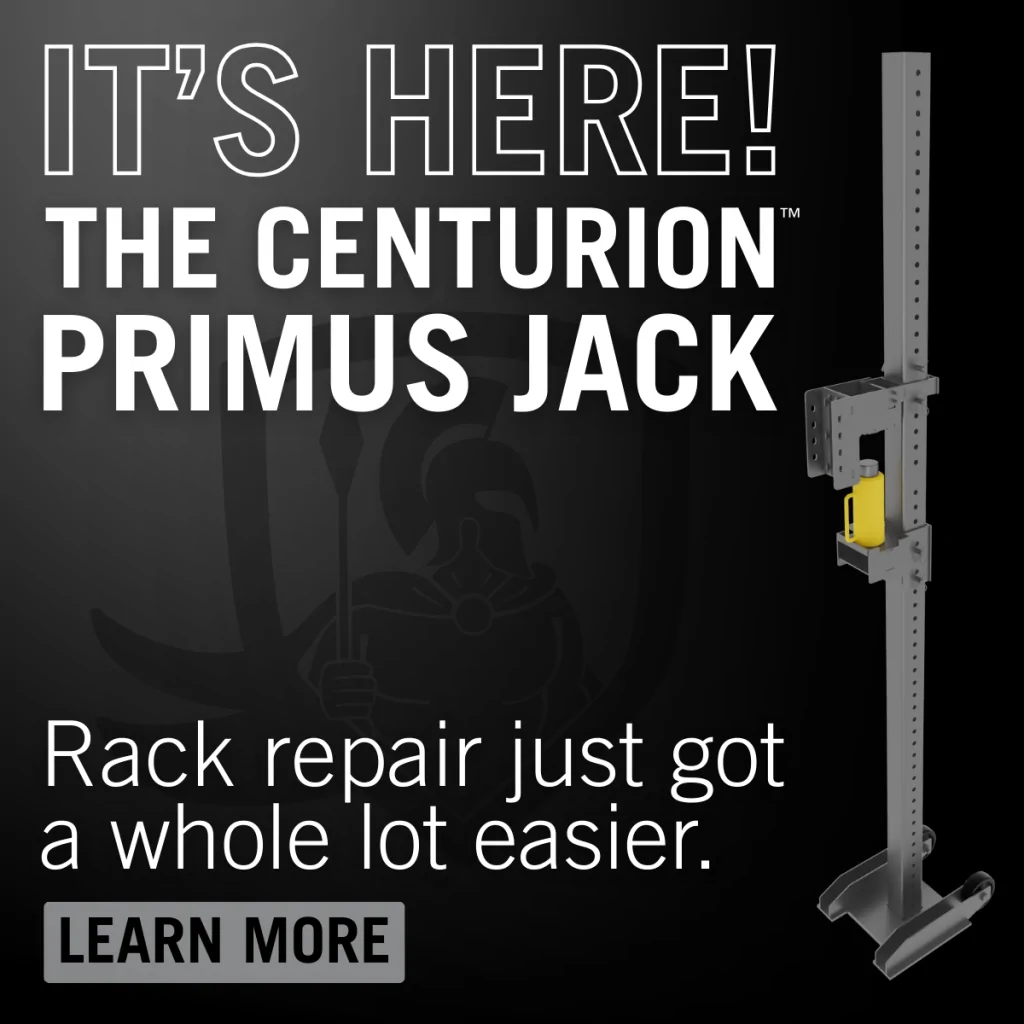Robotic Guarding
robotic guarding Application Overview
Robotic systems are at the forefront of automation, revolutionizing industries by improving efficiency, precision, and productivity. However, with the integration of robots into the workplace, ensuring safety becomes paramount. That’s where SpaceGuard Products steps in. Our robotic guarding equipment is meticulously designed to create a safe working environment, allowing you to harness the full potential of automation while safeguarding your employees and equipment.

Robotic Guarding Features
Comprehensive Protection
SpaceGuard's robotic guarding equipment offers comprehensive protection by creating secure barriers around robots, minimizing the risk of accidents and injuries.
Modular Design
Our systems feature a modular design for easy installation and flexibility in adapting to different robot configurations and workspace layouts.
Clear Visibility
The guarding panels are designed to provide a robot safety fence, allowing clear visibility of robotic operations while maintaining a safe distance for human workers.
Durable Construction
Built with robust materials, our robotic guarding systems are durable and long-lasting, ensuring continuous protection and safety.
Seamless Integration
Our guarding systems integrate seamlessly with existing equipment and safety protocols, ensuring a smooth workflow.
Robotic Guarding Benefits
01.
Enhanced Worker Safety and Accident Prevention
Robotic guarding systems minimize the risk of accidents, collisions, and injuries, ensuring a secure working environment and reducing the likelihood of incidents resulting in serious harm.
02.
Reduced Downtime
Accidents or collisions involving robots can lead to downtime for repairs or investigations. Robot safety guards minimize these occurrences, reducing downtime and maintaining workflow efficiency.
03.
Compliance Assurance
Our robotic guarding products are designed to meet industry safety standards and regulations. By implementing our solutions, you can ensure compliance with safety guidelines, avoiding costly fines and penalties.
Robotic Guarding Product Range
Robotic Guarding Case Studies
Explore real-world applications of our robotic guarding solutions through our compelling case studies. These stories illustrate how SpaceGuard Products’ products have been implemented to enhance safety and efficiency in various industries.

Overcoming Safety Challenges: How Modular Machine Guarding Improved a Beverage Manufacturer’s Operations
The Challenge A global beverage company needed to ensure the safety of their workers across a variety of unique production lines without interrupting their operations.
Robotic Guarding Blogs
Stay informed and inspired with our collection of informative and engaging blogs, offering valuable insights and expert advice on the latest trends and best practices in implementing robotic guarding solutions. Delve into our blog articles to discover how you can optimize safety and productivity in your facility with SpaceGuard Products’ robotic guarding solutions.
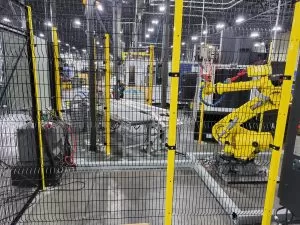
Understanding the Importance of the “Distance to Hazard” in the Safeguarding Industry
Machine guarding is necessary for any business that utilizes machinery with moving parts, such as manufacturing facilities, industrial plants, warehouses, construction sites, and any other
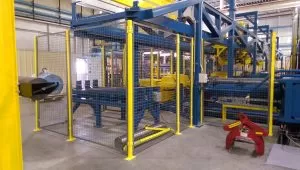
The Benefits of Wire Mesh for Machine Guarding in Industrial Settings
Machine guarding is an essential safety measure that helps protect workers from potential hazards associated with machinery and equipment. In industrial settings, choosing the right
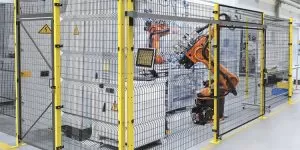
The Importance of Machine Guarding: Protect Your Business From Workplace Injuries
SpaceGuard Products knows the importance of machine guarding to businesses large and small. In this blog, we will explore the importance of machine guarding and
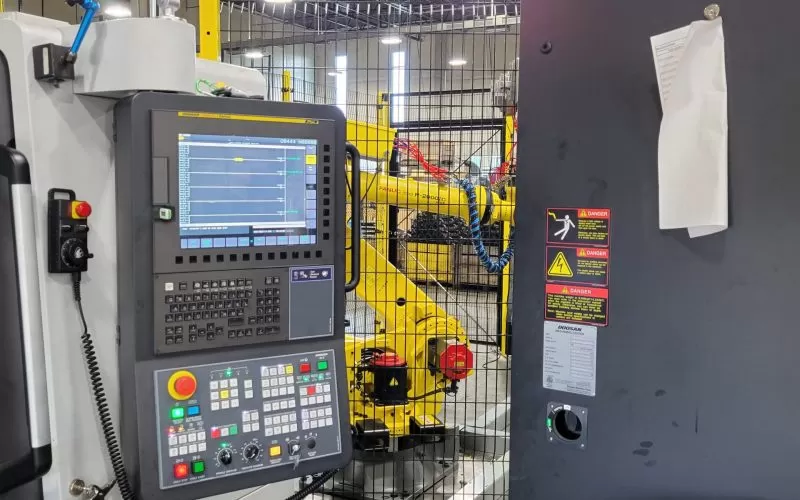
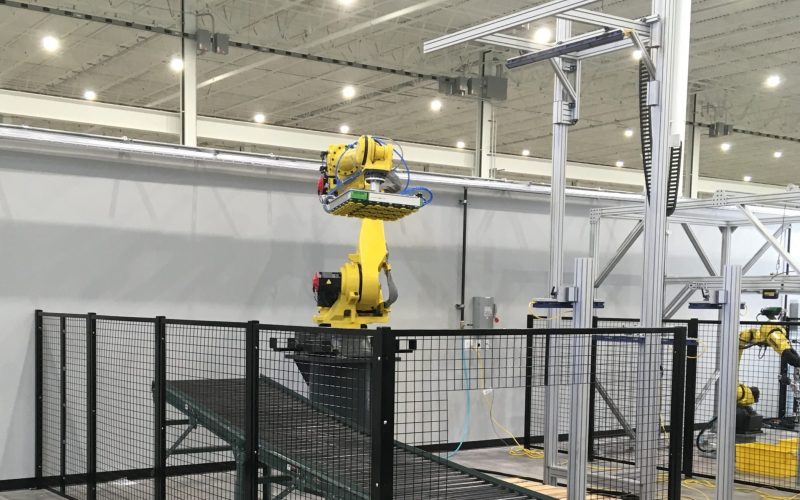

Robotic Guarding
Frequently Asked Questions
The primary standard for industrial robot safety in the U.S. is ANSI/RIA R15.06. This standard outlines the requirements for the design, construction, installation, and maintenance of industrial robots and robot systems. Internationally, the ISO 10218 series serves a similar purpose. Adhering to these standards is crucial for minimizing risks and ensuring compliance with regulations set by organizations like the Occupational Safety and Health Administration (OSHA).
Calculating the correct safety distance is a critical step in designing a guarding system and is outlined in ANSI/RIA R15.06. It’s not a one-size-fits-all solution; the calculation is based on several factors including the robot’s maximum speed, the stop time of the robot and the control system, and the body part that could be at risk. This ensures that a person cannot reach a hazardous area before the robot has come to a complete stop.
Hard guarding, also known as passive guarding, refers to physical barriers like the mesh or solid panels you provide. These barriers are designed to physically prevent access to the hazardous area. Soft guarding, or active guarding, uses electronic sensors and devices to detect when a person enters a designated safety zone. Examples of soft guarding include light curtains, pressure-sensitive mats, and laser scanners. Often, a combination of both is used to provide a comprehensive safety solution.
Yes, our guarding systems are designed to integrate seamlessly with a robot’s E-stop system. The guarding equipment acts as the physical barrier, while the E-stop system provides a way to immediately halt the robot’s operation in an emergency. In many setups, the guarding is interconnected with the E-stop circuit, meaning if a gate is opened or a section is compromised, the robot will automatically shut down, adding an extra layer of protection.
While collision is the most obvious risk, robotic systems pose other dangers that guarding helps mitigate. For example, a guarding system can contain flying debris from a part being machined or ejected from a process. It can also prevent a person from being caught between the robot and a fixed object, a hazard known as a crushing hazard. Additionally, it can reduce the risk of injury from ancillary equipment, such as grippers or tooling, which may not be part of the robot’s main arm movement but are still dangerous.
Need a quote?
Need more information? Ready to get started?
Contact us today to see how we can help your project be a success!


